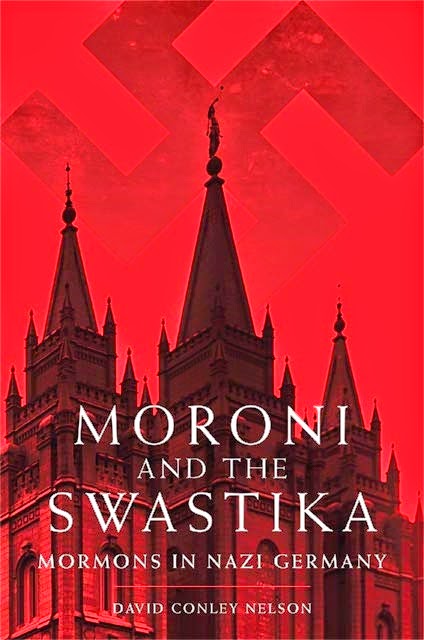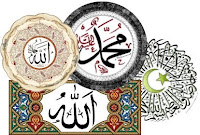Interessante
Autor: David C. Nelson
David Conley Nelson holds a
Ph.D. in history from Texas A&M University. He served six years as an
officer in the United States Marine Corps and is now an independent researcher
and commercial airline captain.
“David Nelson carefully examines
the American and German Mormons who developed a small but dedicated cadre of
converts in prewar Germany. Nelson shows how, as war became imminent, the Nazis
accepted the Mormons and vice versa, whereas some religious communities such as
the Jehovah’s Witnesses resisted and suffered greatly. This book’s critical scope, combined with
intensive research and thorough analysis, provides a story of stunning breadth
and clarity.”
—Robert C. Doyle, author of The Enemy in Our Hands, A Prisoner’s Duty: Great Escapes in U.S. Military History, and Voices from Captivity: Interpreting the American POW Narrative.
“David C. Nelson’s Moroni
and the Swastika takes us to the heart of one of the most important
questions for our age: How could the Nazi horrors have happened and could they
happen again? In this book we learn how ordinary good-living people, driven by
faith and the leadership of their church, were not only silent but also
colluding. Rather than
apportioning blame, this story instead leads readers on a journey toward
understanding the consequences for believers ‘of conflating God and
government.’”—Christine Elizabeth King, author of The Nazi State and the
New Religions: Five Case Studies in Non-Conformity.
“With his comprehensive
consultation of Mormon sources and astute use of recent German scholarship,
David C. Nelson gives an unparalleled view of the remarkable way the LDS Church
prospered in Nazi Germany while many other religious minorities suffered.”—D. Michael Quinn, author of Early
Mormonism and the Magic World View.
While Adolf Hitler’s National
Socialist government was persecuting Jews and Jehovah’s Witnesses and driving
forty-two small German religious sects underground, the Church of Jesus Christ
of Latter-day Saints continued to practice unhindered. How some fourteen
thousand Mormons not only survived but thrived in Nazi Germany is a story
little known, rarely told, and occasionally rewritten within the confines of
the Church’s history—for good reason, as we see in David Conley Nelson’s Moroni
and the Swastika. A page-turning historical narrative, this book is the first
full account of how Mormons avoided Nazi persecution through skilled
collaboration with Hitler’s regime, and then eschewed postwar shame by
constructing an alternative history of wartime suffering and resistance.
The Twelfth Article of Faith and parts of the 134th Section of the Doctrine and Covenants function as Mormonism’s equivalent of the biblical admonition to “render unto Caesar,” a charge to cooperate with civil government, no matter how onerous doing so may be. Resurrecting this often-violated doctrinal edict, ecclesiastical leaders at the time developed a strategy that protected Mormons within Nazi Germany. Furthermore, as Nelson shows, many Mormon officials strove to fit into the Third Reich by exploiting commonalities with the Nazi state. German Mormons emphasized a mutual interest in genealogy and a passion for sports. They sent husbands into the Wehrmacht and sons into the Hitler Youth, and they prayed for a German victory when the war began. They also purged Jewish references from hymnals, lesson plans, and liturgical practices. One American mission president even wrote an article for the official Nazi Party newspaper, extolling parallels between Utah Mormon and German Nazi society. Nelson documents this collaboration, as well as subsequent efforts to suppress it by fashioning a new collective memory of ordinary German Mormons’ courage and travails during the war.
The Twelfth Article of Faith and parts of the 134th Section of the Doctrine and Covenants function as Mormonism’s equivalent of the biblical admonition to “render unto Caesar,” a charge to cooperate with civil government, no matter how onerous doing so may be. Resurrecting this often-violated doctrinal edict, ecclesiastical leaders at the time developed a strategy that protected Mormons within Nazi Germany. Furthermore, as Nelson shows, many Mormon officials strove to fit into the Third Reich by exploiting commonalities with the Nazi state. German Mormons emphasized a mutual interest in genealogy and a passion for sports. They sent husbands into the Wehrmacht and sons into the Hitler Youth, and they prayed for a German victory when the war began. They also purged Jewish references from hymnals, lesson plans, and liturgical practices. One American mission president even wrote an article for the official Nazi Party newspaper, extolling parallels between Utah Mormon and German Nazi society. Nelson documents this collaboration, as well as subsequent efforts to suppress it by fashioning a new collective memory of ordinary German Mormons’ courage and travails during the war.
Recovering this inconvenient past, Moroni
and the Swastika restores a complex and difficult chapter to the history
of Nazi Germany and the Mormon Church in the twentieth century—and offers new
insight into the construction of historical truth.
Fonte: http://www.oupress.com


Comentários